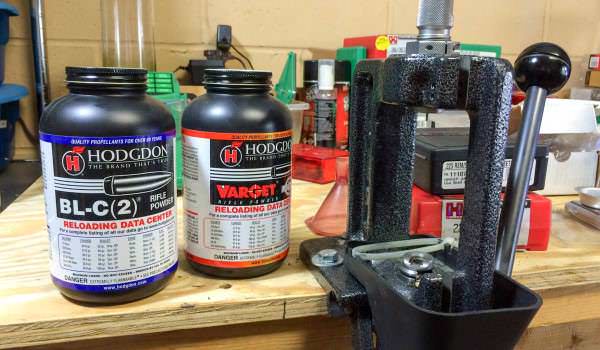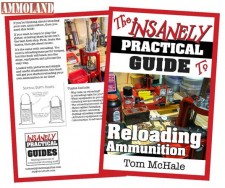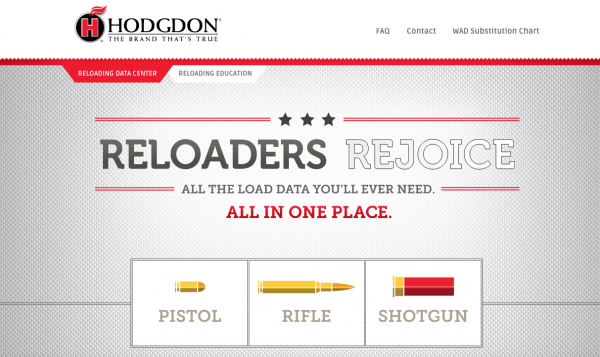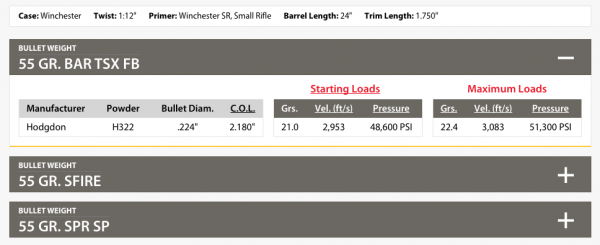By Tom McHale
The Hodgdon folks have launched an online tool to access the Hodgdon Reloading Data.


USA –-(Ammoland.com)- I think learning to reload your own ammunition is kind of like learning to play the Ukelele.
If by chance you make an impetuous mid-life decision to follow in the footsteps of the great Don Ho, then you can’t just order sheet music and start.
You need to find a way to learn the process of playing the Ukelele (while looking blissful and content) before sheet music will be of any value.
It’s exactly the same with reloading, although I’m not sure that Hawaiians ever reloaded ammo while playing the Ukelele.

To get started reloading, you need to get load data (sheet music) that is published by a reputable source.
For example, one of the companies that provides reloading powder, Hodgdon, freely provides all sorts of safe and well-tested load recipes for Hodgdon, IMR and Winchester powders.
But before that load recipe data means much, you need to learn the process and science of reloading.
Helping folks learn the process is exactly what the Hodgdon folks are doing now. They’ve published tons of reloading recipe data for years, but now they’ve launched a series of videos to help teach people the art and science of safely making their own ammunition. They key word here is “safely.” Even lowly handgun cartridges operate at extremely high pressure, usually in the neighborhood of 20,000 to 35,000 pounds per square inch. Rifles can easily double those figures. There’s a lot of energy being released when we pull a trigger, so extreme caution in both the process and the load data recipes is in order.
So far, there are three new videos to complement the written introductory and tips and tricks information in the Hodgdon Reloading Center.
The Basic Pistol Cartridge Reloading video (above) shows the process using a combination of video and custom animations. It’s not intended to be a comprehensive training program but does an effective job of showing the reloading steps from depriming and sizing a spent cartridge case through final bullet seating.
Rifle Case Reloading video (above) walks through a similar process, but for a bottleneck rifle case. It doesn’t get into all the nuances, like case trimming, but the view of the process will certainly help prospective reloaders understand the basic steps.
Last in the first batch of videos (above) is an overview of the Shotshell Reloading process. As with the pistol and rifle videos, seeing is understanding. In this case, the video walks through the process of reloading a spent 12 gauge shotshell using a MEC Sizemaster Shell Press, reloading machine. It’s a great way for new reloaders to understand the additional detail that they’re reading in the manuals.

The videos aren’t intended to be an immersive reloading training program, but rather an introduction. There’s a lot to learn about reloading. Heck, I wrote an entire book on how to get started reloading. Watch the videos, then read my book or any other, and things will make a whole lot more sense.
I’m glad to see the folks at Hodgdon providing more education in the Hodgdon Reloading Data Center, but for me, the even bigger value is the load recipe information. The presented through their Hodgdon Reloading Data Center online tool, the website contains thousands of tested and proven recipes for handgun, rifle and shotshell loads from three different powder brands: Hodgdon, IMR and Winchester.
But first, remember that when assembling your own cartridges, never, ever, ever guess at load recipe data or use recipes from an unknown source.
Hodgdon Reloading Data
The folks at Hodgdon have tested safe minimum and maximum loads for thousands of bullet and powder combinations. In the lab environment, pressures can be measured to ensure that load data does not exceed industry specifications. As long a you stay within their published minimum and maximum recipes and follow procedures exactly, you’re good to go and will be constructing safe cartridges.

Here’s how one might use the Hodgdon Reloading Data Center. Suppose I want to make a new batch of .223 Remington cartridges. I happen to have some Hodgdon H322 powder. To find out exactly how much powder to use in my loads, I can start a rifle load recipe search.

After entering the Rifle Reloading Data section, I enter values in the first four steps. I’ll choose .223 Remington as the caliber, 55 grains as the bullet weight, Hodgdon as the powder manufacturer, and H322 as the powder.
After hitting the “Get Data” button, I’ll get results with Starting Loads and Maximum Loads. This represents my safe range of powder charge. As long as I construct my cartridges with at least 21.0 grains of H322 and less than 22.4 grains, I’m in safe territory. The Hodgdon Reloading Data Center also provides other critical information like the maximum length of the completed cartridge and the length to which I should trim the resized .223 Remington brass.

It’s a handy tool, and I use it all the time. Reloading manuals have similar information but can quickly go out of date. New powders may be released, or newer formulations of existing powders might change the safe minimum and maximum load amounts.
For these reasons, I like getting my reloading data straight from the horses mouth so to speak.
If you’re thinking about learning how to “roll your own” ammo, check out the Hodgdon Reloading Data Center for some beginner tips. Once you get started, you’ll find the reloading data to be an invaluable resource.
You can’t ask for a more reputable source of loading data than the folks who make the powder, right?
About
Tom McHale is the author of the Insanely Practical Guides book series that guides new and experienced shooters alike in a fun, approachable, and practical way. His books are available in print and eBook format on Amazon. You can also find him on Google+, Facebook, Twitter and Pinterest.
